
SAND
The publisher gratefully acknowledges the generous contribution toward the publication of this book provided by the Directors Circle of the University of California Press Foundation, whose members are:
John M. & Jola Anderson
Jacqueline Avant
Nancy & Roger Boas
Beverly Bouwsma
Jamie & Philip Bowles
Robert & Alice Bridges Foundation
Earl & June Cheit
Lloyd Cotsen
Liza Dalby
Sam Davis
Sukey & Gilbert Garcetti
Jean E. Gold
Daniel Heartz
Betty Hine
D. Kern Holoman
David & Sheila Littlejohn
Michael McCone
Thomas & Barbara Metcalf
Jack & Jacqueline Miles
Lucinda Reinold
Roth Family Foundation
Ruth A. Solie
Tania Stepanian
Barry & Marjorie Traub
Patricia Trenton
Stanley & Dorothy Wolpert
MICHAEL WELLAND
SAND
THE NEVER-ENDING STORY
 UNIVERSITY OF CALIFORNIA PRESS BerkeleyLos Angeles
UNIVERSITY OF CALIFORNIA PRESS BerkeleyLos Angeles
University of California Press, one of the most distinguished university presses in the United States, enriches lives around the world by advancing scholarship in the humanities, social sciences, and natural sciences. Its activities are supported by the UC Press Foundation and by philanthropic contributions from individuals and institutions. For more information, visit www.ucpress.edu.
University of California Press
Berkeley and Los Angeles, California
2009 by Michael Welland
First paperback printing 2010
Excerpt from Eternal Sunshine of the Spotless Mind reproduced courtesy of Universal Studios Licensing LLLP.
Excerpt from A Grain of Sand reproduced with the permission of the estate of Robert Service.
Excerpt from The Edge of the Sea by Rachel Carson. 1955 by Rachel L. Carson. All copying, including electronic, or redistribution of this text, is expressly forbidden.
Sandpiper from The Complete Poems, 19271979 by Elizabeth Bishop. 1979, 1983 by Alice Helen Methfessel. Reprinted by permission of Farrar, Straus and Giroux, LLC.
Excerpts from Sand, Wind, and War reprinted by kind permission of Stephen Bagnold.
Excerpts from The Sea Around Us by Rachel Carson. 1950 by Rachel L. Carson. All copying, including electronic, or redistribution of this text, is expressly forbidden.
Excerpt from Earthworks reproduced with permission of Curtis Brown Group Ltd., London, on behalf of Brian Aldiss. 1965 Brian Aldiss.
Library of Congress Cataloging-in-Publication Data
Welland, Michael, 1946.
Sand : the never-ending story / Michael Welland.
p.cm.
Includes bibliographical references and index.
ISBN 978-0-520-26597-4 (pbk. : alk. paper)
eISBN 9780520942004
1. SandMiscellanea.2. SandstoneMiscellanea.I. Title.
QE 471.15.s25w4552009
553.622dc222008009084
Manufactured in the United States of America
18 17 16 15 14 13 12 11 10
10 9 8 7 6 5 4 3 2 1
The paper used in this publication meets the minimum requirements of ANSI/NISO Z 39.481992 ( R 1997) ( Permanence of Paper ).
For my parents
CONTENTS

PLATE 1. A small selection of sand, demonstrating its astonishing variety: (from top) quartz sands from Florida, Sumatra, and Algeria, ooliths from Mexico, olivine from Tahiti, forams from Bali, and volcanic glass sand from the Galapagos. (Sands courtesy of Peter Newman; photo by author)
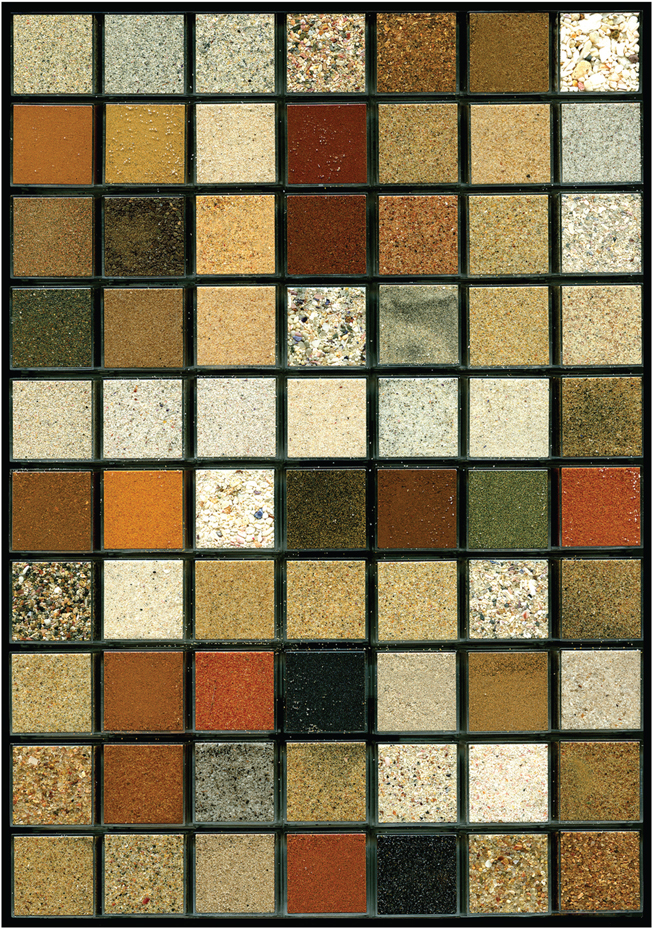
PLATE 2. Sands of South Africa, arranged and photographed by Loes Modderman. (Photo courtesy of Loes Modderman)

PLATE 3. The ingredients of beach sands: Isle of Wight (left), Provence (right). (Photos by author)
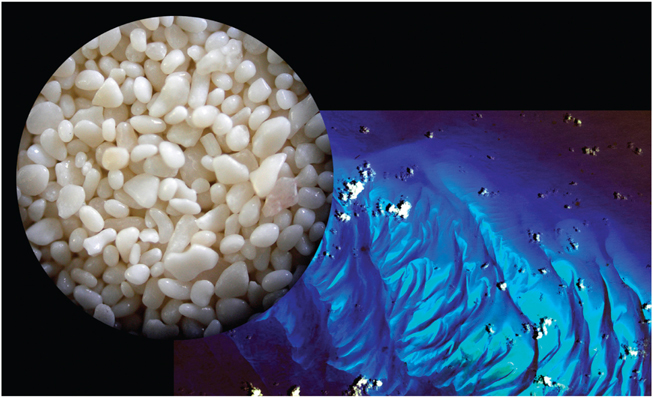
PLATE 4. A microscopic view of oolith grains from Mexico (inset). Ooliths make up much of the sand in the shoals of the shallow tropical waters of the Bahama Banks, seen in the satellite photo at right. The puffy floating objects in this image are clouds. (Inset photo by author; Bahama Banks image by NASA/GSFC/METI/ERSDAC/JAROS and U.S./Japan ASTER Science Team)
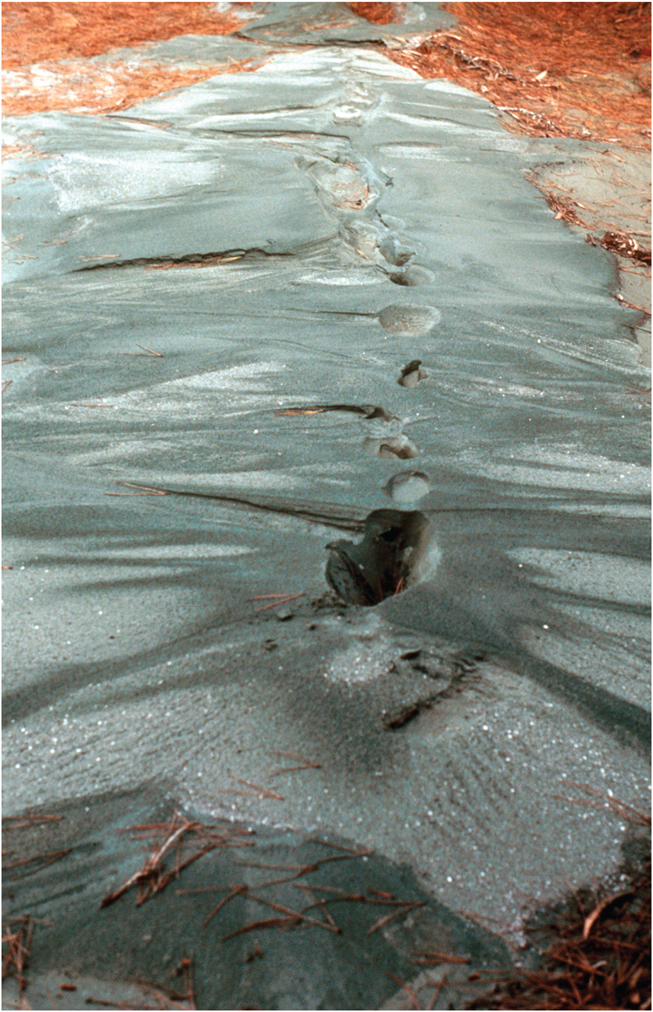
PLATE 5. During the Loma Prieta earthquake of October 17, 1989, in California, sand volcanoes, or boils, erupted in the median of Interstate 80 west of the San FranciscoOakland Bay Bridge toll plaza. Ground shaking transformed a loose water-saturated deposit of subsurface sand into a sand-water slurry that vented along a fissure 7 meters (23 ft) long. (Photo by J. C. Tinsley, courtesy of U.S. Geological Survey)
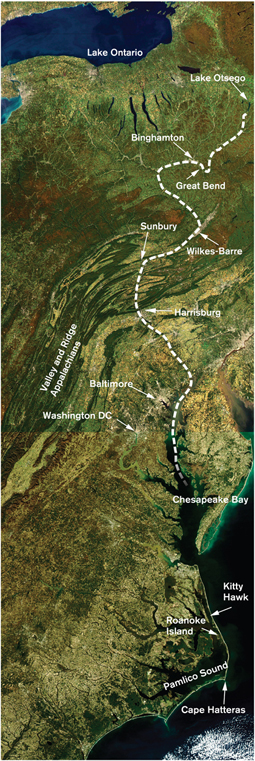
PLATE 6. A satellite view of the northeastern United States, showing the sand grains journey down the Susquehanna River to the Chesapeake Bayand perhaps beyond, to the Outer Banks. Note the plumes of sediment in the estuaries and around the Outer Banks. Locations referred to in chapters 4 and 5 are labeled. (Image by NASA)
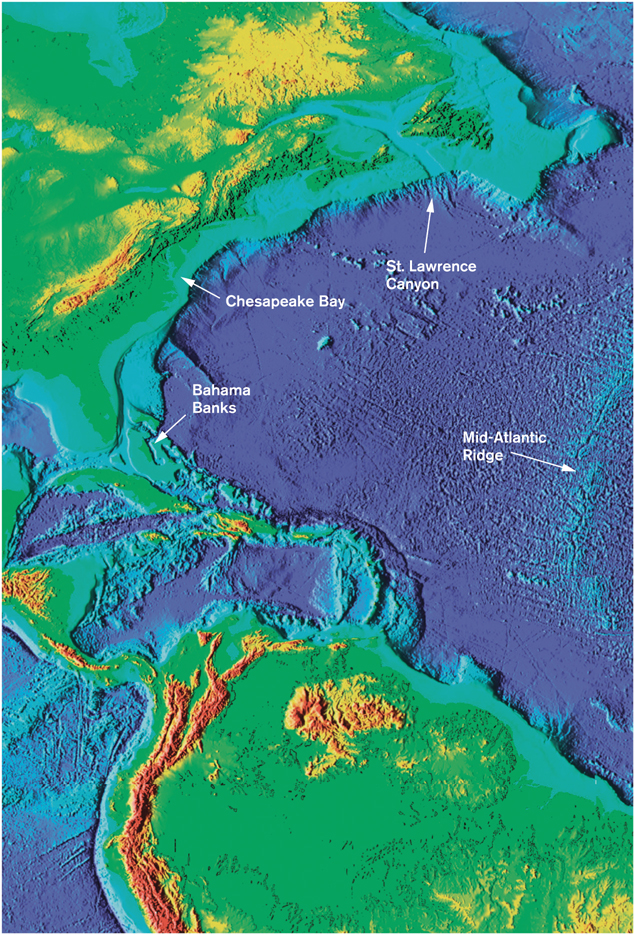
PLATE 7. Continental and oceanic topography: the deepest regions are dark blue, the highest are red. During periods of low sea level, the light blue areas beyond todays shorelines would have been dry land. (Image by NOAA, National Geophysical Data Center)

PLATE 8. Two sand dwellers: a ghost crab playing with sand, and a trumpet worm inside its shell. (Ghost crab courtesy of Robert J. Amoruso, www.wildscapeimages.com; trumpet worm courtesy of Kre Telnes, www.seawater.no)
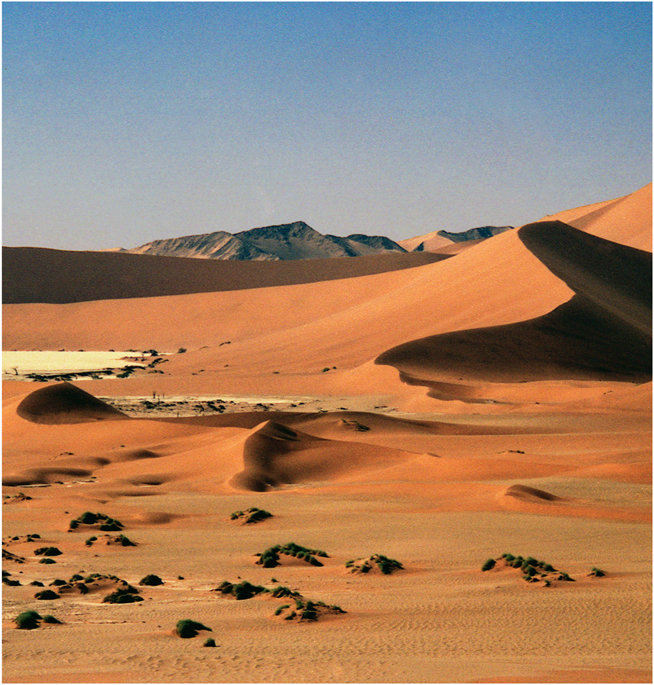
PLATE 9. Mountains, dunes, salt flats, and (sometimes struggling) vegetation of the Namib Desert. (Photo by author)
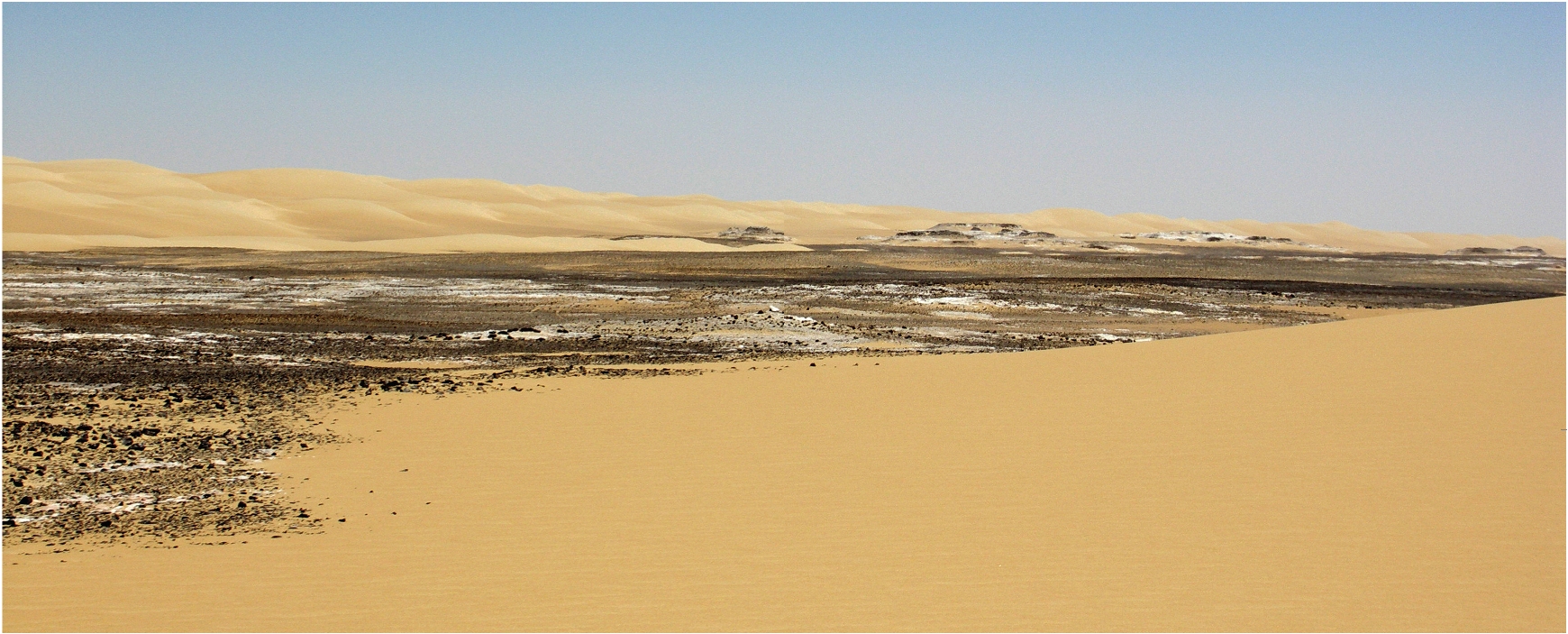
PLATE 10. A street of clear ground between dunes in the Western Desert of Egypt. (Photo by author)
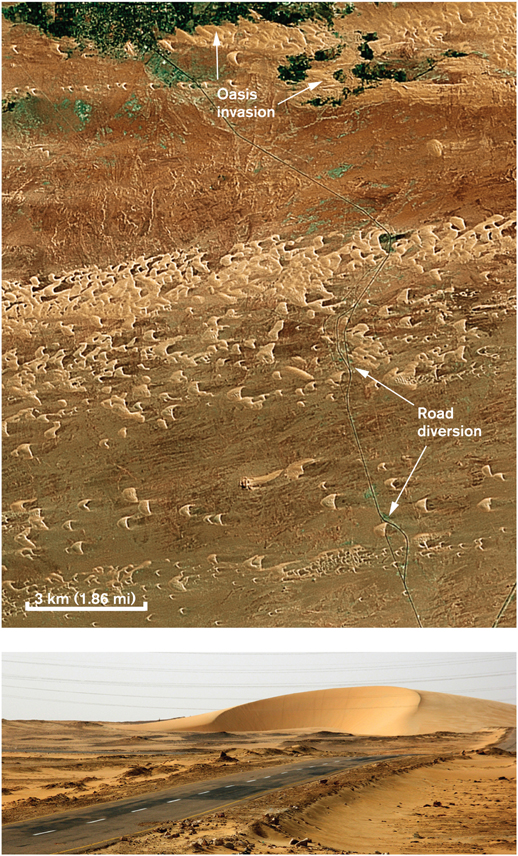
PLATE 11. Viewed from space, colonies of horn-shaped barchan dunes migrate southward (toward the right of the image) in the Egyptian desert; note the babies and the barchanoid ridges of coalescing dunes. In the bottom photo, one of the roads highlighted in the satellite image is being covered by an advancing barchan, the avalanching lee face moving toward the bottom left. (Top image by TerraMetrics; bottom photo by author)
Next page
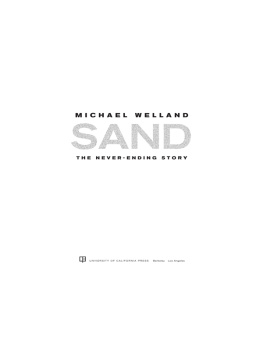


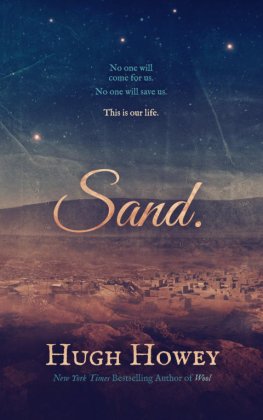


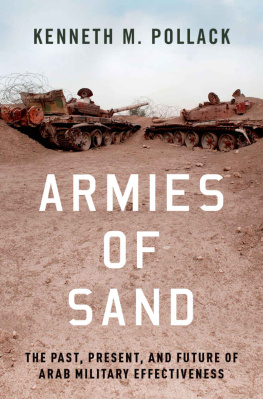

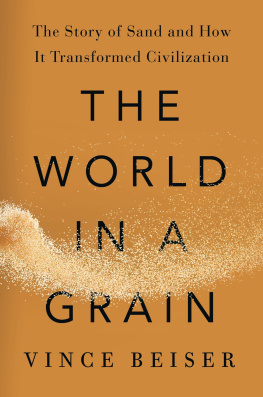
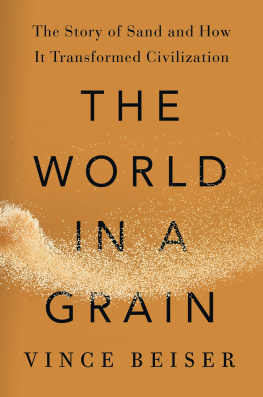


 UNIVERSITY OF CALIFORNIA PRESS BerkeleyLos Angeles
UNIVERSITY OF CALIFORNIA PRESS BerkeleyLos Angeles









